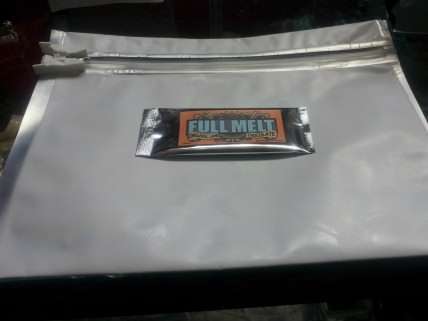Brookings Gives Colorado's Marijuana Regulators High Marks

A new Brookings Institution report gives Colorado high marks for its regulation of the state's newly legal marijuana market. "The rollout…of legal retail marijuana has been largely successful," writes Brookings fellow John Hudak. "The state has met challenging statutory and constitutional deadlines for the construction and launch of a legal, regulatory, and tax apparatus for its new policy. In doing so, it has made intelligent decisions about regulatory needs, the structure of distribution, prevention of illegal diversion, and other vital aspects of its new market."
There is no question that Colorado's rollout has been a lot smoother than Washington's. But some of the things Hudak admires about Colorado's approach seem like mistakes to me. He views mandatory vertical integration (which expires in October) and the exclusion of new retailers (which does not end until 2016 in Denver, the center of the industry) as ways of limiting diversion and reducing the state's regulatory challenge. To me these rules look more like protectionist measures that exemplify regulatory capture.
Hudak does acknowledge other shortcomings of Colorado's system. He notes that the new marijuana taxes encourage recreational users to pose as patients, for example, and that restrictions on consumption encourage tourists to buy edibles, which can result in unpleasant overdoses if they are not accustomed to this route of administration. "When it comes to edibles," he observes, "tourists tend to be naïve users—the highest-risk group."
Hudak counts regulation of edibles as one of Colorado's remaining challenges, arguing that consumers do not currently receive adequate guidance regarding appropriate doses:
In my own trip to a retail marijuana dispensary, I observed a couple interested in purchasing a marijuana brownie. The "budtender" explained in detail to the buyer that the brownie contained six servings and that proper consumption involved dividing the brownie or biting off a small chunk. The information was correct and clear, but who eats a sixth of a brownie or a quarter of a candy bar? Moreover, people who smoke, dab, or vape marijuana experience the effects quickly. However, edibles can take 30 to 60 minutes before the consumer feels a "high." As a result, an individual—particularly one unfamiliar with marijuana edibles—may overconsume, believing the product is ineffective.
In my experience, the lag can be even longer than Hudak suggests, and he is right that the idea of eating just a piece or two of a brownie, cookie, or candy bar is counterintuitive, although all products have labels that indicate the total amount of THC and the number of 10-milligram servings the package contains. Yesterday the Department of Revenue's Marijuana Enforcement Division (MED) unveiled new regulations aimed at addressing this issue. Instead of reducing the limit on total THC per package (currently 100 milligrams for the recreational market), the MED wants to require that all products be readily divisible into 10-milligram doses, an approach that makes more sense in light of consumer diversity.
While 10 milligrams may be plenty for new or occasional consumers, regular consumers typically will want a lot more. Edible makers were already responding to this diversity—for example, by offering single-serving, low-dose products for newbies and packages containing 10 single-dose candies that might appeal to both occasional and regular consumers. Given options like those, the new rule, which amounts to a ban on products like 100-milligram truffles (since they are not easily divided into 10 servings) seems unncessary. But at least it will not interfere with consumer choice as much as arbitrarily limiting all packages to 10 milligrams of THC, as Gov. John Hickenlooper suggested, would have.
The new regulations—which are scheduled to take effect in November, following a public comment period—also require that all single-serving edibles come in child-resistant packaging. Currently retailers are allowed to put them in child-resistant "exit bags" (above right) instead. The change does not make much sense to me. If anything, a multi-serving package poses more of a potential hazard to children once it's removed from an exit bag than a single-serving package does. More generally, the MED's persnickety packaging prescriptions are hard to justify given that there are no such requirements for alcohol, a drug that is much more dangerous in the hands of children. Instead we rely on parents to keep alcoholic beverages (along with lots of other potentially dangerous products) away from their kids. Such disparate treatment seems to contradict Amendment 64, Colorado's legalization initiative, which promised to "regulate marijuana in a manner similar to alcohol."
Hudak does not delve into that issue, but the report is full of details that will fascinate anyone with an interest in topics such as policy implementation, stakeholder inclusion, internal coordination, and inventory tracking. To me, the really exciting aspect of all this regulatory information is that Colorado has succeeded in making marijuana boring by making it legal.


Show Comments (11)